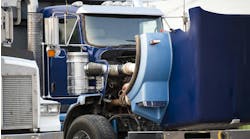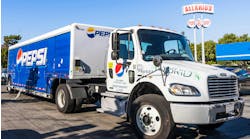The other, er, brake shoe has at last dropped. More than two years after trucking first anticipated it being finalized, the National Highway Traffic Safety Administration (NHTSA) has FINALLY issued it's new final rule on truck-braking standards.
It's all rather de facto and totally anti-climactic given that heavy-truck brake suppliers long ago figured out how they would most likley meet even the most stringent new stopping-distance regulation.
And to its credit, NHTSA has indeed opted for the most rigorous performance factor that it had proposed-- requiring that "large truck" stopping distances by improved by 30%.
According to NHTSA, the new standard will require that a tractor-trailer traveling at 60 miles per hour come to a complete stop in 250 ft. That's 30% better than the current standard of a complete stop within 355 ft.
Starting in 2012, Class 8 rigs will have to stop in 30% fewer feet.
Once in effect, the new braking rule will save 227 lives annually, NHTSA estimated. The agency said the requirement will also prevent 300 serious injuries and estimated it will cut property damage costs by over $169 million annually.
“Safety is our highest priority,” said Secretary of Transportation Ray LaHood. “Motorists deserve to know they are sharing the road with large trucks that are up to the safest possible standards, so they can get home alive to their families.”
The new rule won't kick in until truck model year 2012 and will be phased in over four years. Given its potential to save lives, as declared by NHTSA itself, and the oft-stated readiness of truck brake suppliers to meet the rule when it was yet a proposal, it's a shame this potent safety advance is not on even a slightly faster track to legal implementation.
Of course, that doesn't mean truck OEMs working with their brake suppliers won't roll out vehicles with better stopping performance ahead of 2012.


